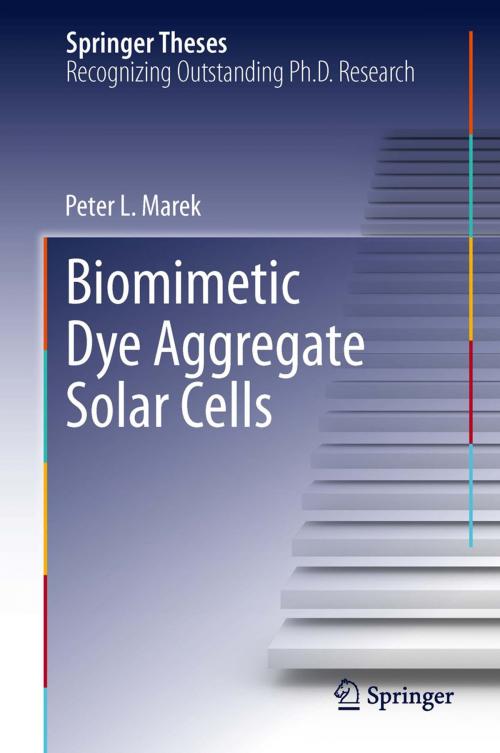Biomimetic Dye Aggregate Solar Cells
Nonfiction, Science & Nature, Science, Other Sciences, Nanostructures, Physics, Energy, Technology| Author: | Peter L. Marek | ISBN: | 9783319006369 |
| Publisher: | Springer International Publishing | Publication: | September 3, 2013 |
| Imprint: | Springer | Language: | English |
| Author: | Peter L. Marek |
| ISBN: | 9783319006369 |
| Publisher: | Springer International Publishing |
| Publication: | September 3, 2013 |
| Imprint: | Springer |
| Language: | English |
This thesis describes a new approach to the construction of solar cells. Following nature's example, this approach has the goal to find a biomimetic self-assembling dye, whose aggregates can mimic the natural light-harvesting system of special photosynthetic active bacteria. The thesis investigates methods to control the self-assembly such that suitable dye aggregates are formed with high internal order and size-confinement. The dye aggregates can be implemented into a new type of solar cells, designed to combine the advantages of hybrid solar cells and solid-state dye-sensitized solar cells (ss-DSSCs): dye aggregate solar cells (DASCs). This book describes the construction and first tests of a prototype for DASCs on the basis of the investigated dye aggregates. The described approach has the advantage that it will enable to build up a light-harvesting system fully synthetically in large scale in order to realize low-cost, light-weight and environmentally friendly solar cells - a worthwhile goal towards the exploitation of clean energy from sunlight.
This thesis describes a new approach to the construction of solar cells. Following nature's example, this approach has the goal to find a biomimetic self-assembling dye, whose aggregates can mimic the natural light-harvesting system of special photosynthetic active bacteria. The thesis investigates methods to control the self-assembly such that suitable dye aggregates are formed with high internal order and size-confinement. The dye aggregates can be implemented into a new type of solar cells, designed to combine the advantages of hybrid solar cells and solid-state dye-sensitized solar cells (ss-DSSCs): dye aggregate solar cells (DASCs). This book describes the construction and first tests of a prototype for DASCs on the basis of the investigated dye aggregates. The described approach has the advantage that it will enable to build up a light-harvesting system fully synthetically in large scale in order to realize low-cost, light-weight and environmentally friendly solar cells - a worthwhile goal towards the exploitation of clean energy from sunlight.















